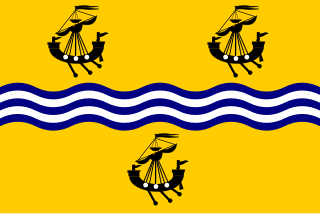
The Outer Hebrides or Western Isles, sometimes known as the Long Isle or Long Island, is an island chain off the west coast of mainland Scotland. The islands are geographically coextensive with Comhairle nan Eilean Siar, one of the 32 unitary council areas of Scotland. They form part of the archipelago of the Hebrides, separated from the Scottish mainland and from the Inner Hebrides by the waters of the Minch, the Little Minch, and the Sea of the Hebrides.
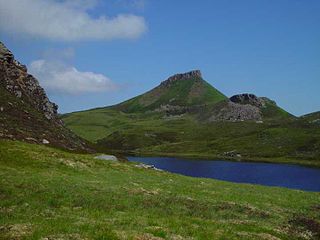
Raasay sometimes the Isle of Raasay is an island between the Isle of Skye and the mainland of Scotland. It is separated from Skye by the Sound of Raasay and from Applecross by the Inner Sound. It is famous for being the birthplace of Gaelic poet Sorley MacLean, an important figure in the Scottish Renaissance.

Earl of Dunmore is a title in the Peerage of Scotland.

Eilean Donan is a small tidal island situated at the confluence of three sea lochs in the western Highlands of Scotland, about 1 kilometre from the village of Dornie. It is connected to the mainland by a footbridge that was installed early in the 20th century and is dominated by a picturesque castle that frequently appears in photographs, film and television. The island's original castle was built in the thirteenth century; it became a stronghold of the Clan Mackenzie and their allies, the Clan MacRae. In response to the Mackenzies' involvement in the Jacobite rebellions early in the 18th century, government ships destroyed the castle in 1719. The present-day castle is Lieutenant-Colonel John Macrae-Gilstrap's 20th-century reconstruction of the old castle.

Leverburgh is the second largest village, after Tarbert, in Harris in the Outer Hebrides of Scotland. Leverburgh is within the parish of Harris. In 1971 it had a population of 223.
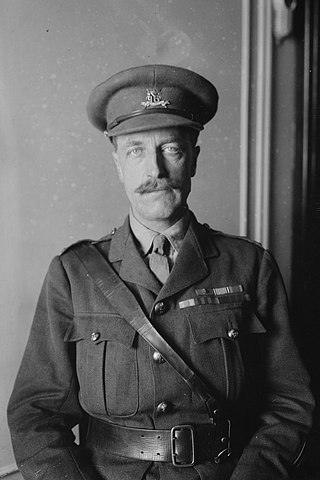
Alexander Edward Murray, 8th Earl of Dunmore, known by the courtesy title Viscount Fincastle until 1907, was a Scottish peer, soldier and politician.

Tarbert is the main community on Harris in the Western Isles of Scotland. The name means "isthmus", "crossing point" or "portage", in Gaelic. The isthmus, between the sea lochs West Loch Tarbert and East Loch Tarbert, joins south Harris to north Harris and Lewis. In 1981 it had a population of 503.

Muness Castle is located on Unst, which is one of the Shetland Islands of Scotland. The castle is 3 kilometres (1.9 mi) east of the village of Uyeasound. Unst is Scotland's most northerly inhabited island, and Muness is the most northerly fortalice in the British Isles. It was designated as a Scheduled monument in 1953 and is run as a museum by Historic Environment Scotland.

Edinample Castle is a late 16th-century tower house on the southern shores of Loch Earn near Balquhidder in the Stirling council area of Scotland. It was designated as a Category A listed building in 1971.

Crawford Castle, substantially in ruins, is located on the north bank of the River Clyde, around 1⁄2 mile north of Crawford, South Lanarkshire, Scotland. The ruins stand on an earlier motte and bailey earthwork. The castle is also known as Lindsay Tower, after its former owners, the Lindsay family. The strategic location of the castle, at NS954213, guards the strategically important Mennock Pass from England into the upper Clyde Valley.

Comlongon Castle is a tower house dating from the later 15th century or early 16th century. It is located 1 kilometre (0.62 mi) west of the village of Clarencefield, and 10 kilometres (6.2 mi) south-east of Dumfries, in south west Scotland. The original tower has been extended by the addition of a baronial style mansion, completed around 1900. Originally built by the Murrays of Cockpool, it remained in the Murray family until 1984. It was subsequently restored, having been vacant for some time, and the castle and mansion are now a hotel. As of 15 April 2019, the business side of Comlongon Castle has gone into Administration, consequently all weddings due and accommodation booked for after this date were cancelled, leaving the future of the castle uncertain.

Amhuinnsuidhe is a settlement on Harris, in the Outer Hebrides, Scotland. The settlement is also within the parish of Harris. Amhuinnsuidhe is centred on the country house, Amhuinnsuidhe Castle, which is adjacent to the B887 road.

Catherine Murray, Countess of Dunmore, was an English peeress and promoter of Harris Tweed.

Birse Castle is located in the Forest of Birse, Aberdeenshire, Scotland. Originally a square tower house, it was rebuilt in the first decade of the 20th century into an L-plan structure. The 1930 addition of a new wing gave it a Z-plan. The building was designated a category B listed building in 1971.

Ardvourlie Castle is a 19th-century country house on Harris, one of the Western Isles off the north-west coast of Scotland. The house was built beside Loch Seaforth in 1863 as a hunting lodge on the North Harris Estate, for Charles Murray, 7th Earl of Dunmore, the then owner of the island. It is a category B listed building.
John Murray, 2nd Earl of Dunmore, also Viscount of Fincastle and Lord Murray of Blair, Moulin and Tullimet, was a Scottish peer and British Army general.
Events from the year 1865 in Scotland.
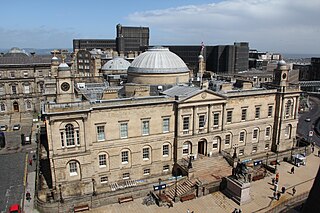
General Register House is an Adam style neoclassical building on Princes Street, Edinburgh, purpose built by Robert Adam between 1774 and 1788 as the headquarters of the National Archives of Scotland. It is a Category A listed building.
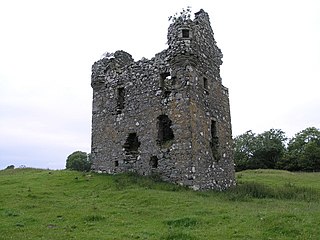
Plunton Castle is a ruined L-plan tower house between Kirkandrews and Gatehouse of Fleet in Dumfries and Galloway, Scotland. Built around 1575 for the Lennoxes of Plunton, it passed by marriage to the Murrays of Broughton in the late 17th century. It was still inhabited in 1684, when it was described by Reverend Symson in his Large Description of Galloway as "a good strong house", but by 1838, when it was painted by George Colomb, it had been abandoned and had fallen into a ruinous condition.
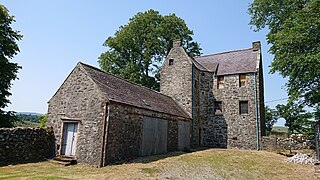
Earlstoun Castle, sometimes spelled Earlston Castle, is a derelict tower house near St John's Town of Dalry in Dumfries and Galloway, Scotland. Built in the late sixteenth century, it was home to members of the Gordon family, including William Gordon of Earlston who was killed at the battle of Bothwell Bridge. It is unusual for a tower house of its age for its lack of defensive arrangements: it has no gun loops, its roof is without a parapet or corner turrets, and it lies in open ground without natural defences.




















